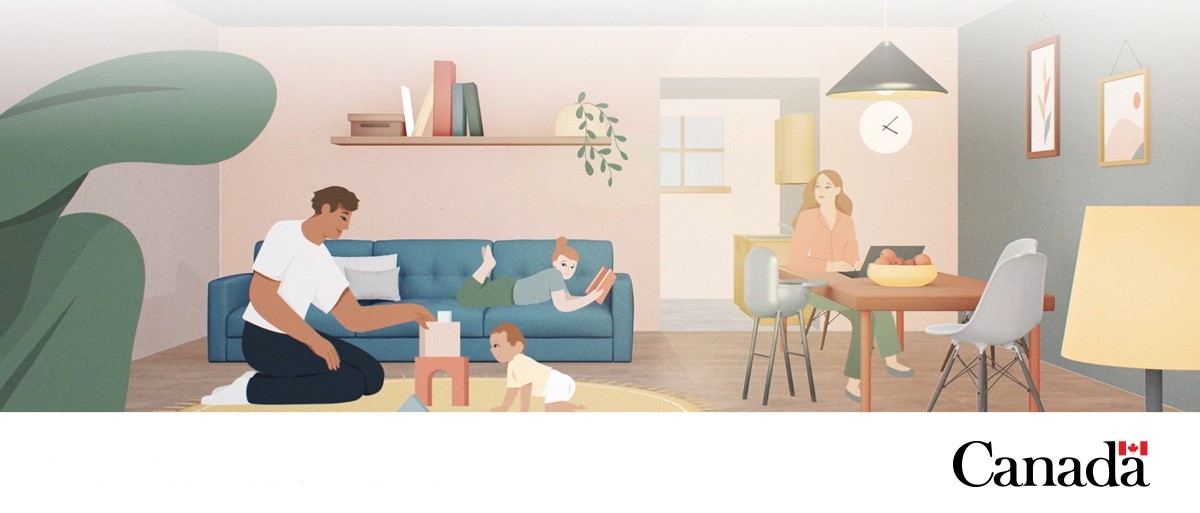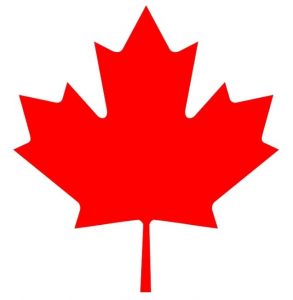
UPDATE October 2, 2020 – Legislation to support Canadians through new Recovery Benefits has passed.
On October 2, Royal Assent was received for Bill C-4, which enacts the Canada Recovery Benefit (CRB), the Canada Recovery Caregiving Benefit (CRCB), and the Canada Recovery Sickness Benefit (CRSB). A new web page has been launched to provide instructions for transferring from CERB to EI or other benefits.
New webpages were released for each of the new benefits: CRB, CRCB , CRSB. Applications for CRB open October 12, 2020 and applications for CRCB and CRSB open October 5, 2020.
UPDATE September 24, 2020 – The government introduces legislation to support Canadians through Recovery Benefits.
On September 24, the government announced the introduction of Bill C-2, to create three new temporary Recovery Benefits to support Canadians unable to work for reasons related to COVID-19. The details were originally announced on August 20. The legislation differs slightly from the original announcement, in particular, the payments under the Canada Recovery Benefit increased from $400 per week to $500 per week. The EI weekly minimum also increased from $400 per week to $500 per week.
Subject to this legislation receiving Royal Assent, the new benefits would provide income support to Canadians and specifically, the legislation includes:
- A Canada Recovery Benefit (CRB) of $500 per week for up to 26 weeks, to workers who are self-employed or are not eligible for EI and who still require income support. This Benefit would support Canadians who have not returned to work due to COVID-19 or whose income has dropped by at least 50%. These workers must be available and looking for work, and must accept work where it is reasonable to do so;
- A Canada Recovery Sickness Benefit (CRSB) of $500 per week for up to two weeks, for workers who are sick or must self-isolate for reasons related to COVID-19. This Benefit supports our commitment to ensure all Canadian workers have access to paid sick leave; and
- A Canada Recovery Caregiving Benefit (CRCB) of $500 per week for up to 26 weeks per household, for eligible Canadians unable to work because they must care for a child under the age of 12 or a family member because schools, day-cares or care facilities are closed due to COVID-19, or because the child or family member is sick and/or required to quarantine.
Canadians will be able to apply for the CRB, CRSB, and CRCB through the Canada Revenue Agency (CRA) for one year up until September 25, 2021.
As announced on August 20, temporary measures to help Canadians access EI benefits more easily are effective September 27, 2020, for one year. These changes will also establish a minimum weekly benefit rate of $500 for new EI recipients, at the same level as the CRB.
More detailed eligibility criteria can be found here.
ORIGINAL ARTICLE August 20, 2020 – The government announced new measures to support Canadian workers through the next phase of recovery.
On August 20, the government announced new measures to support Canadian workers through the next phase of recovery. These measures outline the transition from the CERB program into a simplified and enhanced EI program and into new benefit programs.
On August 20, the government announced new measures to support Canadian workers through the next phase of recovery. These measures outline the transition from the CERB program into a simplified and enhanced EI program and into new benefit programs.
The Canada Emergency Response Benefit (CERB) was a temporary response benefit to support Canadians who had to stop working due to the pandemic. The government will be transitioning to a simplified Employment Insurance (EI) program, effective September 27, 2020, to provide income support to those who remain unable to work and are eligible, and introducing a new suite of temporary and taxable recovery benefits to further support workers. The new measures can be broken down into four components:
1. CERB EXTENSION
The CERB program, which is a 24-week program scheduled to end on August 29, 2020, will be extended by an additional four weeks, to September 26, 2020, providing a new maximum of up to 28 weeks of benefits to individuals.
2. SIMPLIFIED AND ENHANCED EI PROGRAM
Beginning September 27, 2020, the EI rules will be simplified and enhanced for a one-year period, with five main changes:
Set a Minimum EI Unemployment Rate Across Canada
A minimum unemployment rate of 13.1% is being used for all EI economic regions, effective for one year starting on August 9, 2020. Individuals in EI regions with an unemployment rate lower than 13.1% will have their EI benefits calculated on the basis of the 13.1% rate, while those in regions with a higher rate will have their benefits calculated using the actual higher rate.
This measure will set a uniform eligibility requirement for EI regular benefits at 420 hours of insurable employment (before the hours credit is applied), provide a minimum entitlement of 26 weeks of regular benefits and set 14 as the number of best weeks of earnings used in the calculation of the weekly benefit rate.
Reduce Minimum Insured Hours to Qualify
Access to EI benefits is normally based on the number of insurable hours an individual has worked in the year prior to their application, or since their last claim. The required insurable hours will be reduced to 120 hours (after the hours credit is applied) or 420 hours (before the hours credit is applied) in the 52 weeks prior to EI application. Under the normal EI rules, the minimum hours required ranged from 420 to 700.
Provide Hours Credit
To help individuals qualify with a minimum of 120 hours of work, EI claimants will receive a one-time insurable hours credit of:
– 300 insurable hours for claims for regular benefits (job loss)
– 480 insurable hours for claims for special benefits (sickness, maternity/parental, compassionate care or family caregiver)
The hours credit will be available for new EI claims for one year. The hours credit will also be made retroactive to March 15, 2020 for claimants who were looking to transition early from the CERB to special EI benefits or work-sharing benefits but could not establish their EI claim due to insufficient hours. For these claimants, the qualifying period will also be extended.
Increase Minimum Benefit Rate
New EI claimants as of September 27, 2020 will receive a minimum benefit rate of $400 per week (updated to $500 per week) (or $240 for extended parental benefits – updated to $300 per week), if this is higher than what their benefits would otherwise be. The EI benefit rate is typically based on a worker’s average weekly earnings before their EI claim.
Self-employed fish harvesters who rely on EI fishing benefits in the off-season will be allowed to calculate their EI fishing benefits using either their actual fishing earnings for their current claim or their fishing earnings from their claim for the same season from the previous year, whichever is higher.
Increase Minimum Weeks of Benefits
EI claimants will be entitled to a minimum of 26 weeks of regular EI benefits. The normal EI rules allowed for a range of 14 to 45 weeks, depending on various factors.
3. THREE NEW BENEFIT PROGRAMS
As the CERB begins to wind down, the Government plans to introduce a suite of three new recovery benefits, which would be effective from September 27, 2020 for one year. The Government of Canada intends to introduce legislation to support the delivery of the new recovery benefits.
Canada Recovery Benefit
The new Canada Recovery Benefit would provide a benefit amount of $400 per week (updated to $500 per week) for up to 26 weeks to workers who are not eligible for EI, mainly the self-employed, including those working in the gig economy.
The benefit would be available to residents in Canada who:
• are at least 15 years old and have a valid Social Insurance Number (SIN);
• have stopped working due to the COVID-19 pandemic and are available and looking for work; or are working and have had a reduction in their employment/self-employment income for reasons related to COVID-19;
• are not eligible for Employment Insurance;
• had employment and/or self-employment income of at least $5,000 in 2019 or in 2020; and,
• have not quit their job voluntarily.
Workers would apply after every two-week period for which they are seeking income support and attest that they continue to meet the requirements. In order to continue to be eligible for the benefit the claimant would need to look for and accept work when it is reasonable to do so. The benefit is taxable.
Claimants would be able to earn income from employment and/or self-employment while receiving the benefit, as long as they continue to meet the other requirements. However, claimants would need to repay some or all of the benefit through their income tax return if their annual net income, excluding the Canada Recovery Benefit payment, is over $38,000. In other words, claimants would need to repay $0.50 of the benefit for each dollar of their annual net income above $38,000 in the calendar year to a maximum of the amount of benefit they received.
Canada Recovery Sickness Benefit
The new Canada Recovery Sickness Benefit would provide $500 per week, for up to two weeks, for workers who are unable to work because they are sick or must self-isolate due to COVID-19.
The benefit would be available to:
• Residents in Canada who are at least 15 years of age and have a valid Social Insurance Number (SIN);
• Workers employed or self-employed at the time of the application; and
• Workers who earned at least $5,000 in 2019 or in 2020.
Workers would not be required to have a medical certificate to qualify for the benefit. Workers could not claim the Canada Recovery Sickness Benefit and receive other paid sick leave for the same benefit period. Workers would need to have missed a minimum of 60% of their scheduled work in the week for which they claim the benefit.
Workers would apply after the one-week period in which they are seeking income support and attest that they meet the requirements. The benefit would be taxable.
Canada Recovery Caregiving Benefit
The new Canada Recovery Caregiving Benefit, would provide $500 per week, for up to 26 weeks per household to eligible Canadians to help ensure parents and others with dependents do not need to choose between caring for them and paying the bills.
In order to be eligible for the Canada Recovery Caregiving Benefit, individuals would need to:
• reside in Canada;
• be at least 15 years of age on the first day of the period for which they apply for the benefit;
• have a valid Social Insurance Number;
• be employed or self-employed on the day immediately preceding the period for which the application is made;
• have earned at least $5,000 in 2019 or in 2020;
• have been unable to work for at least 60% of their normally scheduled work within a given week because of one of the following conditions:
- they must take care of a child who is under 12 years of age on the first day of the period for which the benefit is claimed:
- because their school or daycare is closed or operates under an alternative schedule for reasons related to the COVID-19 pandemic;
- who cannot attend school or daycare under the advice of a medical professional due to being at high risk if they contract COVID-19; or
- because the caregiver who usually provides care is not available for reasons related to the COVID-19 pandemic; or
- they must provide care to a family member with a disability or a dependent:
- because their day program or care facility is closed or operates under an alternative schedule for reasons related to COVID-19;
- who cannot attend their day program or care facility under the advice of a medical professional due to being at high risk if they contract COVID-19; or
- because the caregiver who usually provides care is not available for reasons related to the COVID-19 pandemic;
• not be in receipt of paid leave from an employer in respect of the same week; and
• not be in receipt of the CERB, the EI Emergency Response Benefit (ERB), the Canada Recovery Benefit, the Canada Recovery Sickness Benefit, short-term disability benefits, workers’ compensation benefits, or any EI benefits or Quebec Parental Insurance Plan (QPIP) benefits in respect of the same week.
Workers would apply after the period in which they are seeking income support and attest that they meet the requirements. Two members residing in the same household could not be in receipt of the benefit for the same period. The benefit is taxable.
4. EI PREMIUM RATE FREEZE
The Government is freezing the EI premium rate for employees at the 2020 level of $1.58 per $100 of insurable earnings for two years. The rate for employers, who pay 1.4 times the employee rate, will also remain unchanged at $2.21 per $100 of insurable earnings.
APPLICATION
After September 26:
– Individuals already receiving benefits through Service Canada will be transitioned to the EI program once they have received the maximum CERB benefits for which they are entitled, if they are EI eligible and continue to need income support.
– Individuals who are currently receiving the CERB from the Canada Revenue Agency (CRA) who believe they are entitled to EI will need to apply through Service Canada after September 26.
– Individuals not eligible for the EI program may be able to apply for the new Canada Recovery Benefit programs. CRA would administer the Canada Recovery Benefits, and Canadians would be able to apply through the CRA. In the coming weeks, the CRA will provide more details on how and when Canadians can get ready to apply www.canada.ca/coronavirus.
For the full details of this announcement, see the backgrounder.

This article has been written in general terms to provide broad guidance only. It should not be relied upon to cover specific situations and you should not act upon the information contained herein without obtaining specific professional advice. Please contact our office to discuss this information in the context of your specific circumstances. We accept no responsibility for any loss or damage resulting from your reliance on the information in this article.
